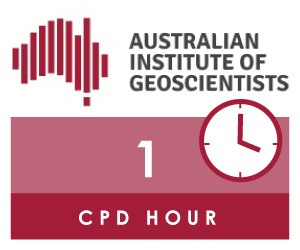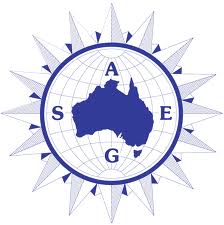| |

 ASEG Queensland Branch meeting for March 2015. Speaker: Dr Ross Kleinschmidt
ASEG Queensland Branch meeting for March 2015. Speaker: Dr Ross KleinschmidtThe talk will follow the ASEG Queensland Branch annual general meeting.
NORM (or naturally occurring radioactive material) has become a topic of interest within Queensland, not only associated with uranium exploration and mining, but also in metalliferous mining and processing. The inert, radioactive gas radon is a decay progeny associated with primordial radioactive elements of uranium and thorium and falls within the scope of NORM scrutiny. Radon has been linked to the onset of lung cancers and hence is a common study topic.
It has been observed that elevated air concentrations of the radioisotope radon-222 (from the uranium-238 series) may be present in abandoned, metalliferous underground mines in the south east of the UK. The concentration levels found may be many orders of magnitude higher than background levels and typical occupational limits. Industrial anthropologists, geologists and mineral specimen collectors may enter these mines, potentially increasing their exposure to radon inhalation.
This presentation highlights preliminary radon (both radon-222 and radon-220) data observed within a historical mine in north Queensland of similar geology to the UK mines. A collaborative research project, including the mine lease holder, Kingston University in London, and Qld Health will fully characterise the radiological environment within the mine, and provide valuable, local information on the potential radiation exposure to those entering the mine, or similar mines, for the purposes of resource evaluation and development, fauna studies and unauthorised purposes (i.e. tourists and fossickers).
Ross Kleinschmidt has a PhD in the field of environmental health physics. He has worked in the field of ionising radiation in an academic environment, as a regulator with the Queensland Department of Health and currently is head of a team of health physicists and radiochemists within the Radiation and Nuclear Science group, Queensland Department of Health. Ross has also consulted for the International Atomic Energy Agency (IAEA) Laboratory’s Seiborsdorf, to develop guideline documents and novel, rapid radio analytical techniques for use and promotion by the Agency to Member States and developing countries. He has accumulated a broad spectrum of applied knowledge in areas including radioactive waste disposal and waste store design & operation, decontamination and decommissioning of radiation facilities, contaminated land survey, assessment & remediation, radiation dose reconstruction, and the identification & assessment of the impact of naturally occurring radioactive materials (NORM). Ross’ current areas of interest lie in developing ‘portable’ data standards for radiometric assessments and surveys, characterisation of portable radiation measurement instrumentation, and he is a strong advocate for evidence based radiation safety policy development. He is committed to highlighting the current lack of, but significant need for, high quality and robust baseline radiation data sets for terrestrial, air and biota systems in Queensland.